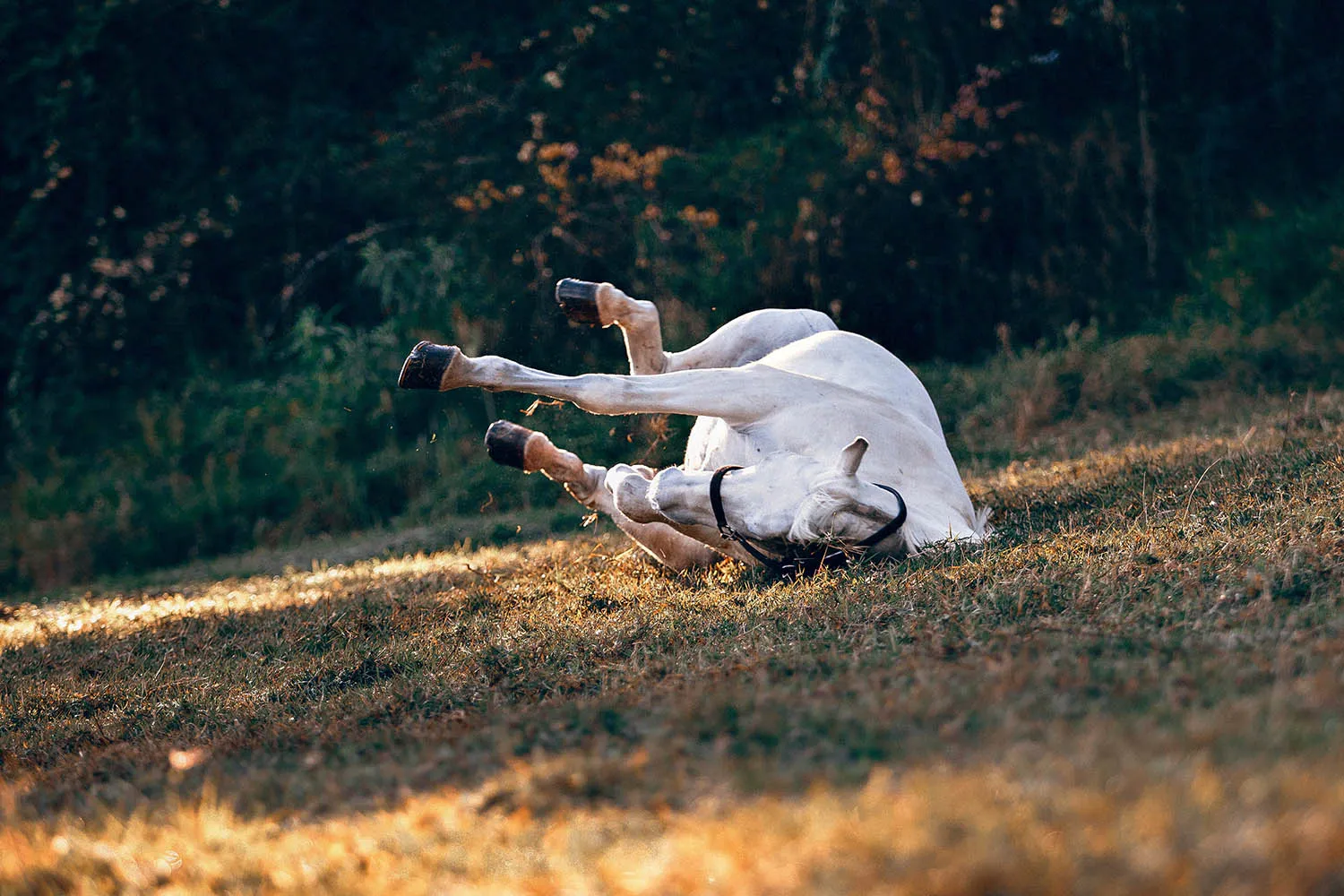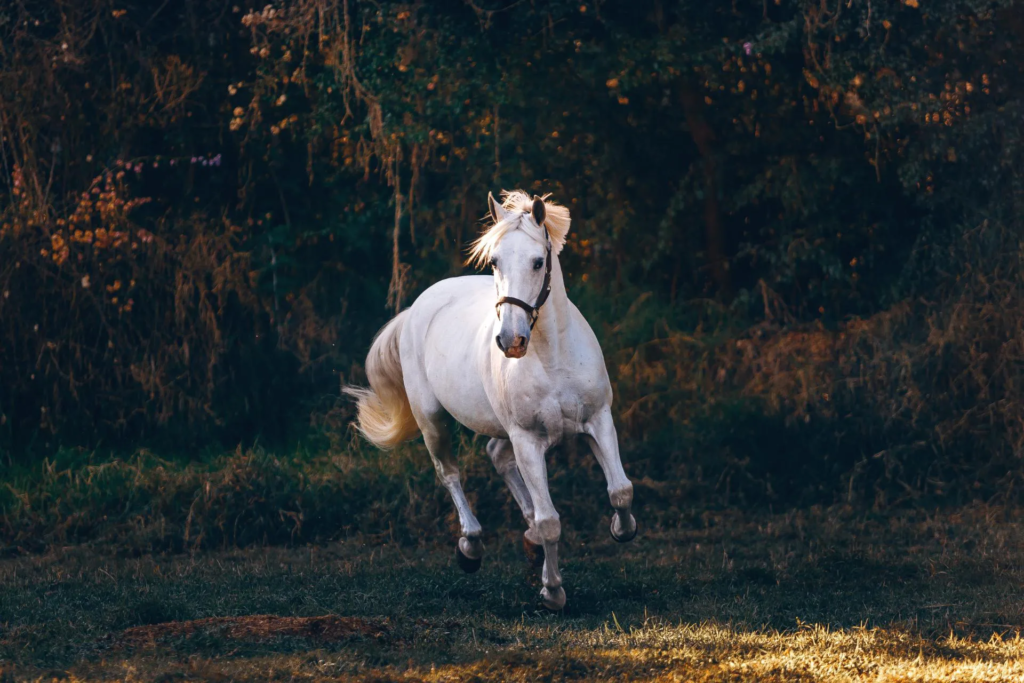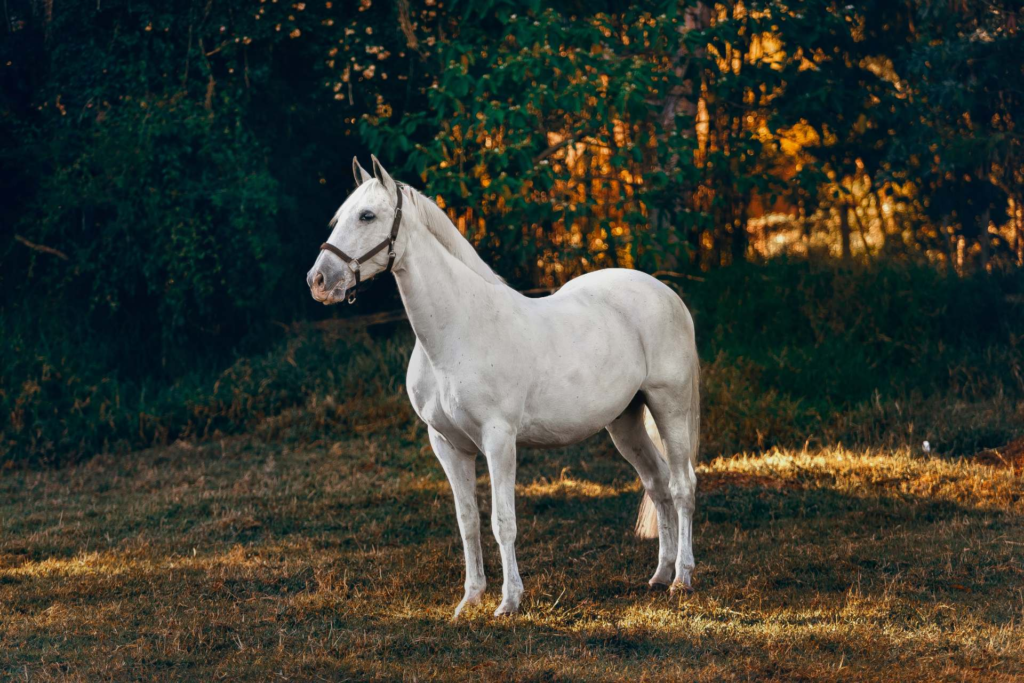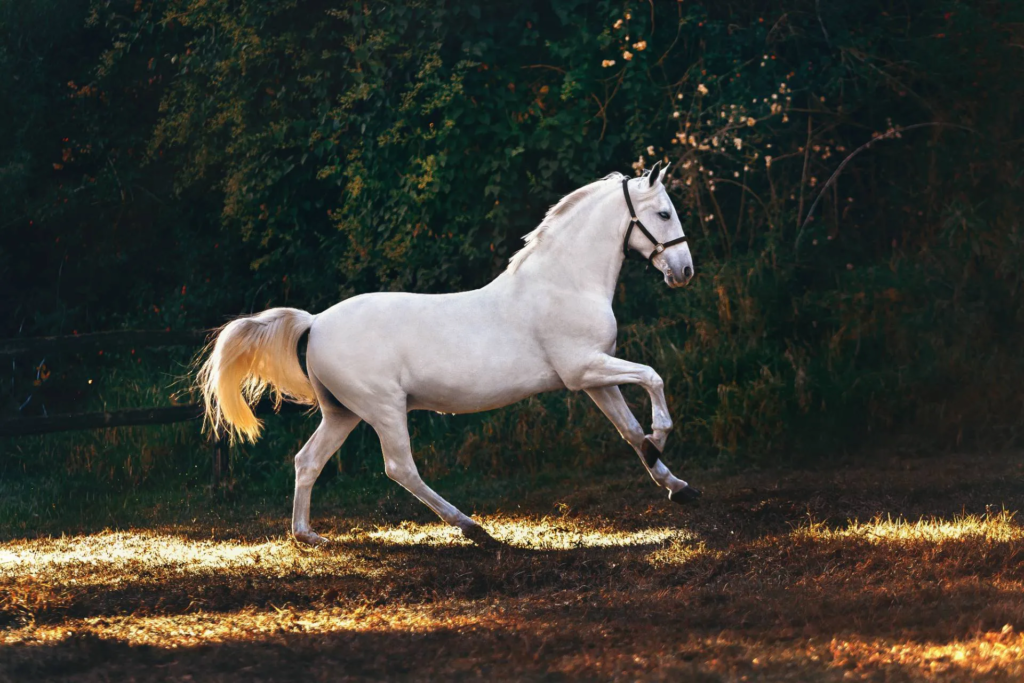Menu

It is a fact that the more a horse is kept indoors, the more enthusiastic it generally is about finally being let out. Unfortunately, the more a horse stays indoors, the less resilient its limbs become to the antics that excitement often brings. This is because when horses are outside, their bones, tendons, and muscles are strengthened, which reduces the risk of injury. Therefore, even if the weather is gloomy, it's best to let horses be outside as much as possible. Simply put, pasture time can help extend your horse's lifespan. Here, we will try to explain why.

Pasture time is crucial training. We certainly don't mean that your horse suddenly comes in from the pasture with a sharper topline or significantly better condition. Not at all. However, it will come in with a locomotor system that has been activated, strengthened, and maintained. When the horse is on pasture, it walks, stands, and occasionally takes a proper run with all sorts of bucks and leaps. Because the horse's body is accustomed to these antics, the risk of it sustaining an injury is very low. A horse that is kept indoors a lot, whose locomotor system is not as used to unbridled escapades, will instead quickly become overloaded when allowed to cut loose. Simply because its muscles, bones, ligaments, and tendons aren't trained for it.
A long pasture time is an essential—and indeed quite free—part of building a strong and resilient horse. Without the long days in both sunshine and rain, with grass or mud under its hooves, it wouldn't be able to live the life it is meant to lead, nor what we as riders demand of it. Hours in the pasture simply equip the horse to be a horse. There are also many other benefits to letting your horse spend a lot of time outdoors. For example, movement in the pasture helps stimulate the horse's blood circulation. This provides more oxygen for the organs to function optimally. Additionally, moving outdoors for many hours helps improve coordination and body awareness. This can benefit any horse—from the casual pony to the hard-working top horse.

Time in the pasture not only helps maintain the horse's basic strength. This is evident from veterinary and equine chiropractor Heidi Nielsen's blog post "Let Your Horse on Pasture – It's FREE Training". She believes that pasture time is also significant for the training we put into the horse.
"When many of us train our horses, it's often with either collection in mind or to increase performance. If the muscles and tendons are not strong and flexible enough, the risk of microtraumas, which eventually lead to joint inflammation and tendon injuries, is very, very high."
What Heidi points out is that the horse needs a sufficient, strength-based foundation to handle what we demand of it when we get in the saddle. Pasture time is the foundation for training under the rider. It makes the tendons, ligaments, bones, muscles, and connective tissue strong enough to work under the rider. From there, you can build upon your training of the horse, whether the goal is to have the horse piaffe, tölt, or jump a 130 cm course. So, the more pasture time you give your horse, the stronger it becomes, and the more you can expect from it, without— to a certain extent, of course—fearing injuries.
Read also: Readers input: Is your stable sustainable?
It is thought-provoking that a horse is designed to be active for 16-20 hours a day. Imagine how many of those hours we take away by putting it in a stall where it can just turn around. Heidi also makes an interesting point here. "Try to add up how many hours your horse stands in the stall. For example, a horse that is let out at eight in the morning and back in at four in the afternoon will stand in its stall for 16 hours. Maybe you ride it for an hour in the evening, so it stands only 15 hours in its stall, but that's still a lot of hours where the horse is inactive," she writes.
Therefore, it is surprising that the law on horsekeeping is not more demanding when it comes to the horse's access to pasture. It specifically states:
Subsequently, it is emphasized that pasture time can "be waived if veterinary or extreme weather conditions decisively dictate otherwise." And here comes the real sticking point. One thing is that only two hours of exercise or pasture time per day is required—and even then, only five out of the seven days of the week. Another thing is, of course, that horse owners perceive extreme weather conditions very differently. Is it when the rain lashes down? Or should it be virtually impossible to open the stable door due to flooding or significant amounts of snow before we can justify keeping the horses inside? The purpose of the law is to ensure good horse welfare, but it is largely up to interpretation to assess whether, for example, mud up over the fetlocks or six hours in pouring rain is better horse welfare than letting the animals stay inside almost all day.
We should probably also tell you a bit about how a pasture should look, so it can help prevent injuries rather than increase the risk of them occurring. Of course, it is neither fun nor healthy for a couple of horse legs to walk around, hour after hour, in deep mud or on a frost-heaved ice rink. In a country like Denmark, it is unfortunately almost impossible to avoid this to some extent. The really important thing is just that the horses have the opportunity to get away from the mud and the hard lumps. That there is a place where the legs can rest from the strenuous substrate. Fortunately, we can do a lot ourselves to make the hours in the pasture also be horse-friendly hours. Often, the whole solution lies in the size of the pasture.
Many might think that a relatively small pasture is good for avoiding injuries, because the horse can't pick up speed. But actually, it's just the opposite. Because when the pasture is small, there is also less room to get away when horses come to blows. And that's where many injuries occur. The solution for some may be to put their horse in a single pasture, but that's not the best either. Besides the social consequence, the limited space will also here cause mud. Mud, from which the horse cannot escape—just like it will not have the opportunity to make the daily antics that help keep it strong. Once again, the arrow points in the direction that the pasture should be as large as possible.
Read also: DIY: Stirrup covers

Returning to the law on horsekeeping, it states that a horse pasture "must have an area of at least 800 m2, of which the shortest side must be at least 20 m." This corresponds to a fairly large residential plot. Only for reasons of illness and injury is it allowed to give the horse less space. If more than four horses are kept together, the pasture must be increased by 200 m2 per horse. With a pasture of 800m2 for four horses, it will, however—due to the Danish climate—be virtually impossible to keep part of the pasture dry and even. Unfortunately, conditions in many places in the country are not more favorable. Given the basic maintenance of the horse's locomotor system, it is better to let it out on a deep, muddy, or lumpy pasture than to keep it inside for 20 hours. This naturally requires that the horse's legs are reasonably accustomed to it. One can quickly enter a vicious cycle where one does not dare to let the horse out much due to the condition of the pasture. This only leads to the horse becoming even more fragile.
Now, we have probably told you enough about why pasture time, in a physical sense, can extend your horse's lifespan. But what about the mental aspect? Horses are known to be social animals, accustomed to being able to nip at each other, become enemies at the water trough, or rub up against each other. All this they cannot do when they are inside a stall. To have a life-loving horse that is willing to work and eager to perform, it is therefore also important to meet its psychological needs. Just as a horse is created to eat around the clock, it is also created to wander around to find food during all these hours. In nature, it would take the hierarchical fights and small games necessary to create peace and order in the herd. Meeting all these needs creates a happy and strong horse. A happy and strong horse is often also an injury-free horse with a long life ahead of it.
Read also: Cook and Hunting Rider "Support means everything"